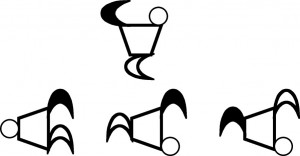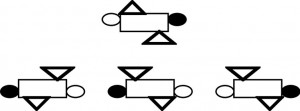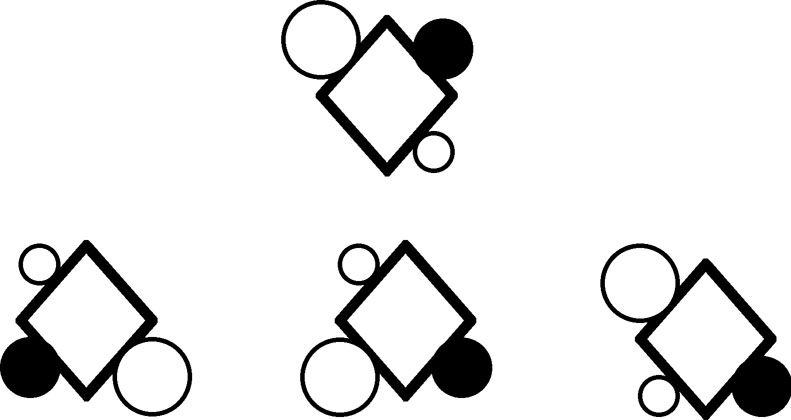Brain Teaser: Test your mental rotation skills
 Are you familiar with mental rotation? It refers to moving things around in your head. It is one of the numerous visuospatial skills that we all have.
Are you familiar with mental rotation? It refers to moving things around in your head. It is one of the numerous visuospatial skills that we all have.
Let’s take an example. Can you picture in your head an arrow pointing to the right? Now, turn this arrow so it points to the left. Done? You have just performed a mental rotation. Although it is rare to consciously imagine objects moving, people automatically use this ability when they read maps, use tools, play chess, arrange furniture, drive in traffic, etc.
Mental rotation relies mostly on the parietal areas of your brain (yellow section in the brain image above).
Here is a brain exercise to stimulate your mental rotation skills.
- The top shape is your model.
- Among the 3 shapes below the model, only one matches the model. To figure out which one does you will probably have to move the shapes around in your head.
- Move the shapes from left to right or right to left but DO NOT FLIP them around.
First set
Second set
Third Set
To see the correct answers click here:
Answers:
First set: The second shape matches the model.
Second set: The second shape matches the model.
Third set: The first shape matches the model.
More brain teaser games:






Interesting. I didn’t do this by moving the shapes in my head — which would never work, I’m spatial-relations challenged. I did get the answers pretty fast though, and I did it by just noticing unique features of the model — for example, the first test, the short side of the polygon has a single outlined crescent attached to it. Only one of the answers meets that criteria. For the second test, only one of the answers has a circle and a triangle-with-its-base-attached-to-the-long-side-of-the-rectangle adjacent to one of the right angles. You get the idea.
I’d love to see a test that truly measures ability to mentally rotate items. I’m sure I’d totally fail :)
As a former Mechanical Designer moving or mirroring the patterns in my head is exactly what I did. Early training for any engineering student involves many hours of these spatial-relations type exercises as it is a necessary skill. Without them, you might want to take up a different field of study, yet it is a skill that can be learned.
Thanks for your comments!
Anon: your example is a great one to show how we can train our brains to learn and boost any types of skills.
I think I ended up cheating on this, my mind just wanted to flip it, I didn’t really rotate it like I was supposed too.
It can be difficult and most all engineering student struggle a bit with it at one time or another. I recall having some issues with Flat Pattern development but in time I mastered that and became rather good at it. About eight years ago I experienced a ruptured cerebral aneurysm and since then my math skills have not been what they should but the spatial-relations skills are still there and maybe even a bit better. I can usually still look at a drawing and, in my mind, project everything into a solid.